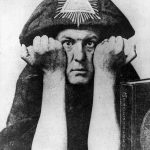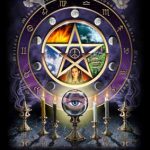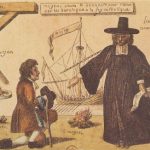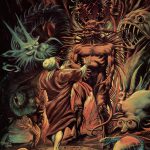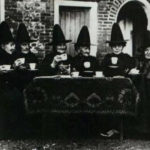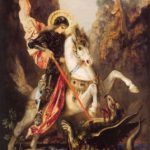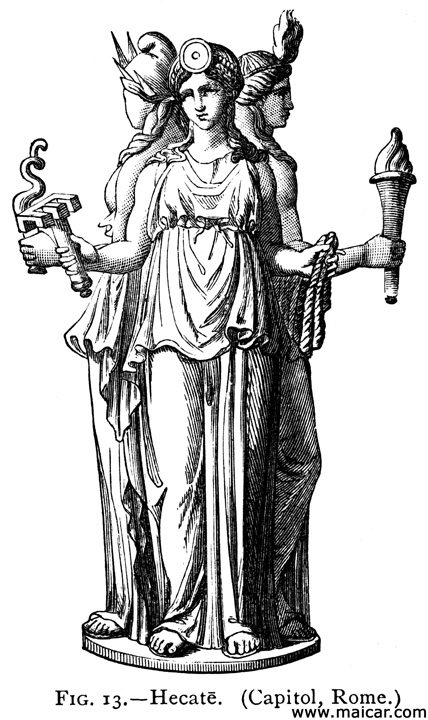
One of the leading, though controversial, advocates of the connection between the European witchcraft of more modern times and the prehistoric pagan past was the Egyptologist Margaret Murray who authored The Witch Cult in Western Europe and The God of the Witches.
These books promoted the concept that some of the Witches who were exterminated by the Christian Churches during the “Burning Times” (1450-1792) were remnants of an earlier, organized, and dominant pre-Christian religion in Europe. Some of the old practices were lost when indigenous religions encountered militant Christianity and were forced to go underground for survival. Parents transmitted their traditions to their children, with parts being lost and new parts created in succeeding generations.
The evidence proves that underlying the Christian religion was a cult practiced by many classes of the community, chiefly however by the more ignorant or those in the less thickly inhabited parts of the country. It can be traced back to pre-christian times and appears to be the ancient religion of western Europe. The god, anthropomorphic or theriomorphic, was worshiped in well-defined rites; the organization was highly developed; and the ritual is analogous to many other ancient rituals. The dates of the chief festivals suggest that the religion belonged to a race which had not reached the agricultural stage. It was a definite religion with beliefs, ritual, and organization as highly developed as that of any other cult in the world.
Gerald Gardner claimed he received a secret initiation to this 2000-years-old tradition and used it as a founding stone to ‘revive’ Wicca. Today most wiccans view themselves as followers of cults they see in a tradition they associate with alleged practices of the European witches, but that is more or less wishful thinking.
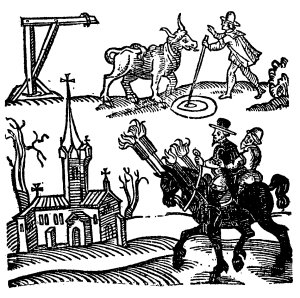
Much of Christianity was derived from Pagan sources; this includes the sites of many cathedrals, the lives of many Christian saints (who were really recycled pagan Goddesses and Gods), many Christian holy days, and many cultural celebrations. There are many vestiges of Paganism which remain a part of our culture; e.g. Groundhog Day, Christmas, May Day 5, Halloween, the names of the days of the weeks and months of the year, common sayings, numerous traditions associated with holidays, etc.
However, there is no evidence of a so called ‘continuous Wiccan presence’ from Celtic times to the 20th century. Gardner probably had access to few, if any, traditional Pagan rites. There is very little in the Wiccan rites that cannot be shown to have come from earlier extant sources. The original material is not cohesive and mostly takes the form of substitutions or expansions within unoriginal material.
The prevailing theory is that most of his rites were the result of merging of a few ancient Celtic beliefs, deity structure, and seasonal days of celebration with modern material from ceremonial magick, the Masonic Order and the works of Aleister Crowley. It is generally accepted that the writings of Aleister Crowley were a major influence on the Witchcraft Revival which began soon after his death in 1947. Gerald Gardner, the founding father of that Revival, had four long meetings with Crowley in the last months of his life, and used many extracts from his works in the rituals of what came to be known as Wicca.
In A History of Witchcraft, Jeffrey B. Russell writes:
Michelet’s argument that witchcraft was a form of social protest was adapted later by Marxists; his argument that it was based on a fertility cult was adopted by anthropologists at the turn of the century, influenig Sir James Frazer’s Golden Bough, Jessie Weston’s From Ritual to Romance, Magaret Murray’s Witch-Cult in Western Europe, and indirectly T.S. Eliot’s The Waste Land. (A History of Witchcraft, p.133)
Russell states further:
Neopagan witchcraft has roots in the tradition of Michelet, who argued that European witchcraft was the survival of an ancient religion. This idea influenced Sir James Frazer and a number of other anthropologists and writers in the late nineteenth and early twentieth centuries. The publication of Charles Leland’s Aradia in 1899 was an important step in the evolution of the new religion of witchcraft. […] The doctrines and practices of the witches as reported by Leland are a melange of sorcery, medieval heresy, witch-craze concepts, and political radicalism, and Leland reports ingenuously that this is just what he expected, since it fitted with what he had read in Michelet (Russell, p.148).

